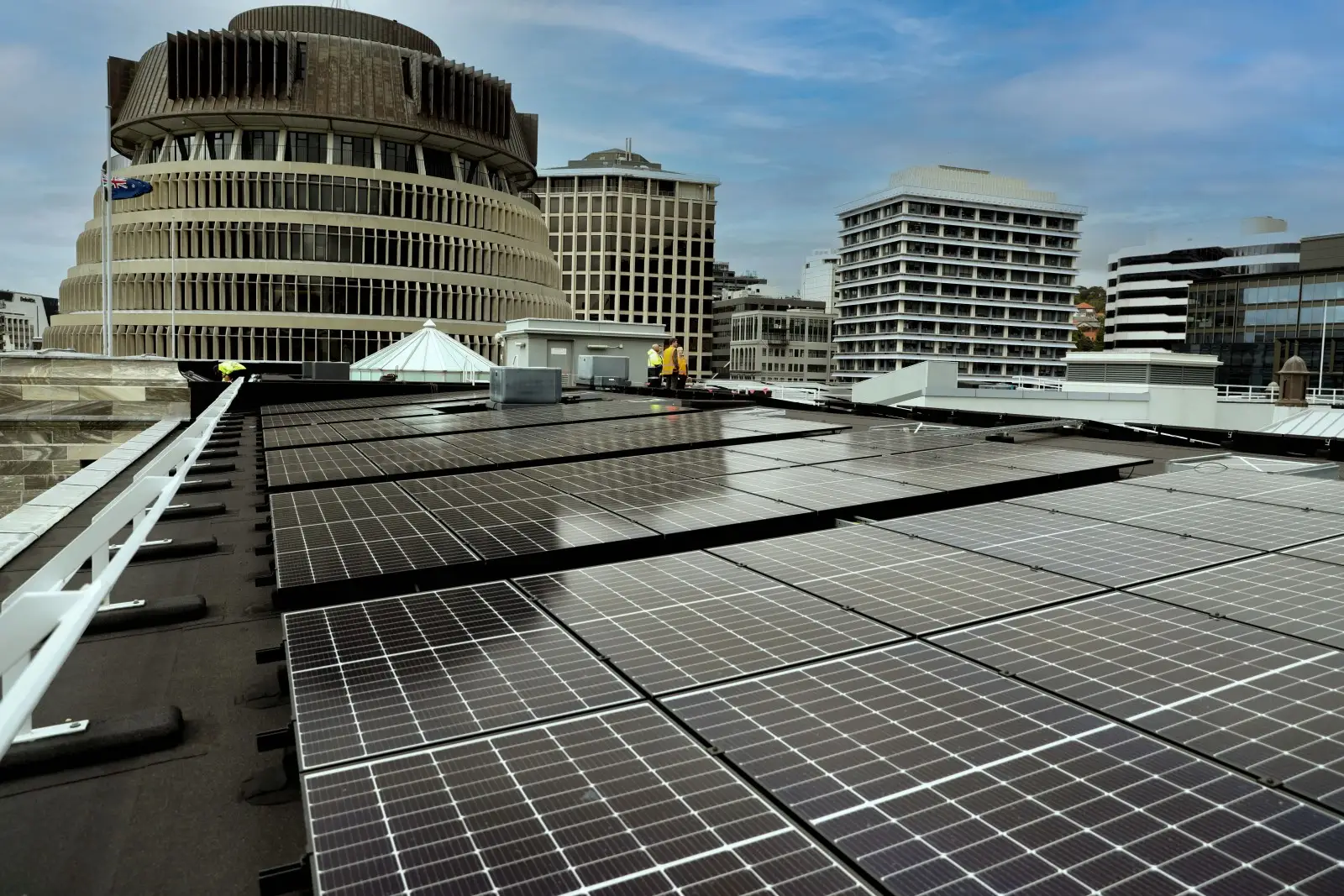Solar energy in New Zealand
In October 2022, Electricity Authority data showed 43,641 solar systems installed across New Zealand, adding up to 240 MW. This makes up an estimated contribution of under 1% of total electricity consumption.
Globally, solar PV uptake has increased significantly over the past decade. While uptake in New Zealand has been slower to date, there is potential for greater utilisation as technology costs decrease, particularly at the grid-scale and on commercial building rooftops.
How much of our electricity comes from solar?
2021 data is sourced from MBIE. Future indications come from Climate Change Commission modelling. The high uncertainty of future indications is due to the rapidly changing cost of solar technology.
- 1 % 2021
- 1-6 % 2035
How does solar electricity work?
Solar electricity via photovoltaics (PV) is the generation of electricity from sunlight. Photovoltaic cells are specially prepared wafers of silicon that absorb light energy (photons) and release electrons, that form an electric current.
Solar panels have the versatility to be installed almost anywhere energy is needed, and can be used on a small scale (e.g. to power individual households) or a large scale (e.g. solar farms).
The future of solar electricity in New Zealand
In recent years, falling module costs have made large scale solar farms commercially viable, and several very large solar farms are currently proposed for construction in the next few years. This decrease in cost – which is expected to keep falling – means that solar may potentially play a stronger role in our electricity grid as electrification intensifies. Forecasts suggest Solar PV could make up 6% of New Zealand electricity supply by 2035.
Explore solar installation data | Electricity Authority(external link)

Advantages and limitations of solar electricity
Advantages
- Abundant – Sunlight is abundant and very accessible.
- Easy to install – Solar PV is particularly useful for its modularity, ease and speed of installation.
- No fuel costs – While the upfront capital costs of installing can be too high for some, the technology has been delivering rapid cost reductions and performance improvements which means that it is rapidly becoming a more attractive and competitive energy source with no ongoing fuel costs
- Versatile – Solar panels can be installed almost anywhere energy is needed. It is suitable for a wide range of applications and sites (including integration into new or existing buildings). Correctly sized solar installations close to loads may reduce or avoid transmission or distribution upgrades compared to other electricity generation types.
- Zero operational emissions – Solar causes no direct greenhouse gas emissions, and local environmental impacts are minimal.
Limitations
- Intermittent generation – Solar PV systems only generate during daylight hours, and only at maximum output in full sun during the middle of the day, which means their average generation is only around 16% of installed capacity. Generally, electricity demands are higher in the winter when solar generation is lowest. Adding batteries to a solar installation can help to smooth out intermittency but can also greatly increase the cost and embodied emissions.
- Capacity – Because of the intermittent nature of solar energy, a large number of panels are required to generate the same amount of energy as other sources that require less space. In addition, you need either storage systems or back-up from other sources to meet demand 24 hours a day.
- Relatively low EROI – Although progress is being made on this front, the Energy Return on Energy Invested (EROI) is lower than all other forms of renewable energy (meaning it is more difficult to obtain the useful energy).
- Embodied emissions – The manufacturing process for PV panels is energy intensive, so panels come with ‘embodied emissions’ which takes several years to offset.
EECA and solar energy
In 2021 EECA undertook research on commercial scale solar in New Zealand, with a focus on the financial performance for solar systems in medium-large businesses.
EECA’s work on the TIMES-NZ future energy scenarios model helps us understand the potential of solar energy in New Zealand. EECA built the model along with BusinessNZ Energy Council and The Paul Sherrer Institute. The model is used to inform policy decisions on energy and climate action. Solar is shown to be a key renewable energy source (primarily grid-scale solar) in New Zealand’s future energy mix, particularly from 2040 onwards.
TIMES is a least-cost model where wind is marginally lower cost than solar over the coming decades. Therefore, TIMES allocates more future electrical generation to wind until the price of solar reduces. Other models such as the Climate Change Commission are more reflective of a situation where electricity generators pursue a mix of technologies, and therefore reflect solar having a bigger share of the energy mix at an earlier date than the TIMES 2.0 model does.
Explore TIMES-NZ energy scenarios
Gen Less solar power calculator
EECA has built a tool to help consumers assess the economics of solar installations. While aimed at residential customers, businesses could also use the tool to assess generation potential at their site.
Solar electricity for business
Solar energy is free – but harnessing it requires investment. Find out if solar PV would suit your business.
Read next
-
From sunlight to savings: how Kaiwaiwai Dairies are maximising energy efficiency with solar
A 54 kw solar PV system is paying off for this Wairarapa dairy farm.
- Case study
- Solar energy
-
Commercial-scale solar in New Zealand
Information for businesses considering investing in solar energy.
- Renewable energy
- Solar energy
- Decarbonisation
-
Rooftop solar with no upfront investment
How an investment in rooftop solar is saving Argosy Property Limited and its tenants money and emissions.
- Case study
- Solar energy
- Decarbonisation
